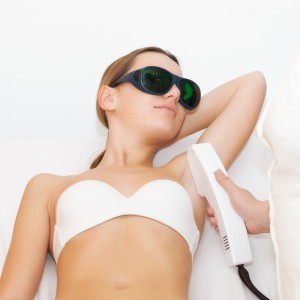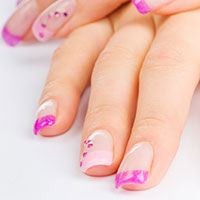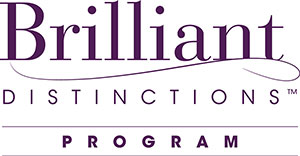Posted on July 12, 2013 in Latest News
 Why do we continually battle hair growth when there is an easy solution? We are not just wasting time, we are also increasing our chances of getting ingrown hairs which can potentially lead to infection. Recent studies have shown that laser hair removal has a very low complication rate compared to other more common hair removal techniques such as shaving, waxing and plucking. In particular, shaving can sometimes result in significant problems. A condition called pseudofolliculitis barbae is actually ingrown hairs from shaving. The treatment of this is to come back and re-treat that area with laser hair removal which often resolves the clinical condition. So instead of just cutting the hair at the surface, why not remove the hair with heat? The heat from the laser moves down into the hair follicle and destroys the follicle’s ability to grow more hair. In general, we consider the hair reduction that occurs after a series of laser treatments to be a permanent hair reduction. Most patients require about five treatments done over a several month time period. Call Amanda at our office (256) 881-4200, or contact Amanda if you would like to talk about laser hair removal. It sounds like a smart, easy decision.
Why do we continually battle hair growth when there is an easy solution? We are not just wasting time, we are also increasing our chances of getting ingrown hairs which can potentially lead to infection. Recent studies have shown that laser hair removal has a very low complication rate compared to other more common hair removal techniques such as shaving, waxing and plucking. In particular, shaving can sometimes result in significant problems. A condition called pseudofolliculitis barbae is actually ingrown hairs from shaving. The treatment of this is to come back and re-treat that area with laser hair removal which often resolves the clinical condition. So instead of just cutting the hair at the surface, why not remove the hair with heat? The heat from the laser moves down into the hair follicle and destroys the follicle’s ability to grow more hair. In general, we consider the hair reduction that occurs after a series of laser treatments to be a permanent hair reduction. Most patients require about five treatments done over a several month time period. Call Amanda at our office (256) 881-4200, or contact Amanda if you would like to talk about laser hair removal. It sounds like a smart, easy decision.
Posted on July 8, 2013 in Latest News

Dr. David Durst recently took some time to answer questions about what patients can expect from brow lift procedures at our Huntsville plastic surgery practice. Below are Dr. Durst’s detailed answers, explaining the process from consult to recovery.
Q: What does the consultation entail?
Dr. Durst: Basically, patients who are considering browlift come to see us for a cosmetic consultation. They usually have spent some time talking to our patient coordinator, Julie, about their concerns on the phone before making an appointment. At that point she spends quite a bit of time explaining some of the different options to them. If they already know that they want and/or need a browlift, she will go into some details about the procedure on the phone but if they are more just generically interested in facial surgery, she will do a more general phone call.
Once a patient is ready for a consultation, they will call and schedule an appointment. At that time, Julie will see the patient and talk to them in more detail about what their wants and concerns are. She will also illustrate photographs of similar procedures on other patients as an aid to the education process. Then I will end up seeing the patient and examining them, in a similar fashion, going through a history to find out what their concerns are and what kind of treatments they have tried, any kind of comorbid factors such as smoking or excessive sun exposure, etc. At that time we will formulate a plan as to what might work best for that patient and spend quite a bit of time explaining to them how the surgery is done, where it is done, what kind of anesthesia, what to expect after surgery and what kind of results are generally expected. In addition, details such as timing of appointments, when a patient can return to work, and when they can return to full activities are discussed. This is usually accomplished at the initial visit.
Q: What is waiting period between making the decision to move forward and the surgery date?
DD: A second visit as a preoperative appointment is usually done about three weeks before surgery and at that point in time we go over specific nuts and bolts of how the procedure is done, what kind of dressing care they will be needing afterward, providing them with their prescriptions for after surgery, discussing specific instructions for after surgery and also talking about the risks associated with the procedures. Just like any other surgical procedure, whether it is heart bypass or appendectomy, there are risks to cosmetic procedures and patients need to understand these. This is also an excellent time to bring a family member or friend who would be helping with the after care so they can get their questions answered.
Generally, the waiting period before the actual surgery is performed is difficult to determine. If a patient comes in knowing exactly what they want, they may be able to get their surgery scheduled within about a month. Sometimes patients need to go home and think about the procedure, associated costs, and their options with respect to recovery and downtime before actually scheduling their surgery so it may be some time before they proceed.
Q: What can a patient do to make sure they are prepared for surgery?
DD: Preoperative appointments are also a time that we discuss with patients things that they can do to optimize their healing and recovery. Often we will recommend avoiding smoking both before and after surgery. Many times we will recommend avoiding tanning at least a few days before surgery and for some period afterward. We will give some advice in some situations regarding nutritional issues and vitamins. We will also discuss in detail what types of medications they can and cannot take before and after surgery, particularly with respect to platelet blockers such as aspirin which can cause some bleeding problems after surgery. We will also recommend an exercise schedule up until the time of surgery. Particularly with a patient who is going to have a procedure that may have a fairly long recovery period we will specifically recommend that they continue their exercise regimen right up to the day before surgery so that hopefully they won’t get “too far out of shape” while they are recovering from their surgery.
Q: What happens on the day of surgery?
DD: On the day of surgery, the patient comes usually about an hour before their scheduled surgery time. They check in with their family at our surgical facility at the office. In a preoperative setting, they are interviewed by the nurse – details regarding their history, physical, medications, and general status are reviewed. An IV is started. The patients change clothes and blood pressure and other vital signs are checked. The specific recovery room type equipment such as warmers and SCDs are utilized.
They are also interviewed at that time by the anesthetist who spends quite some time explaining to them the anesthesia, both before and after surgery issues, discussing recovery from anesthesia, discussing some advice with respect to the particular recommended anesthesias. Risks of anesthesia are discussed at that time as well. Lastly before surgery I see the patient and their family and review with them what we plan to do. We will do some surgical marking for preparation for the actual procedure, we will answer questions and then we are ready to head to the operating room.
Q: What can patients expect post-op and during recovery?
DD: After the surgery, the patient comes back to the recovery room and usually is in the recovery room about five minutes after the end of the actual surgery. At that time, the patients get vital signs checked. They are given medications as necessary. They are allowed to wake up and start drinking and eating a little bit. We get them up to the bathroom, help them move around a little bit. We show their family how to deal with their dressings and what kind of care they will need at home. Usually the family is involved in the recovery room process in the last 30-45 minutes before a patient will go home. Usually the patients do go home about an hour or so after the procedure. That varies based on their actual recovery and appointments are scheduled for their follow-up visits.
Q: When are follow-up appointments scheduled?
DD: Most often we see our patients in follow-up the next day if they are having outpatient cosmetic surgery from the office. It is not every surgery that we do that way but often we will. That provides them with the chance to ask questions if they are unsure of the things that they need to do at home but it also allows us to check things and make sure everything is proceeding along the way it is supposed to. We can make adjustments in their treatment regimen if necessary or adjustments in medications at that point.
It is important to realize that patients can always contact me through the answering service at any time of day should they have significant concerns.
Most patients will be seen usually two to three times in the first two weeks after surgery and then after that, the follow up visits will be spaced out some. We usually do the first set of post-op pictures at two months.
Q: How long until patients typically say they feel like themselves again?
DD: With specific reference to the browlift procedure, most patients feel pretty good after about two weeks. Most patients will return to work somewhere between a week and two weeks after surgery. Most patients look pretty good at that time but they look even better at a month. Generally patients feel like they are fully recovered by a month afterward except for a little numbness associated with their incisions that can take some time to go away.
Contact Us For More Information
If you have additional questions about the browlift procedure, or would like to to schedule a consultation, please contact us.
Posted on June 14, 2013 in Latest News
 Patients often question why they need to have their artificial nails and nail polish removed before surgery. One is simply for monitoring purposes during the surgery because there is equipment that requires the ability to see the nail bed ensuring adequate oxygenation during surgery and it is critically important as the pulse oximeter measures the oxygen level in the blood with a light-based probe that is placed on the finger. If nail polish is in the way, it often results in incorrect reading.
Patients often question why they need to have their artificial nails and nail polish removed before surgery. One is simply for monitoring purposes during the surgery because there is equipment that requires the ability to see the nail bed ensuring adequate oxygenation during surgery and it is critically important as the pulse oximeter measures the oxygen level in the blood with a light-based probe that is placed on the finger. If nail polish is in the way, it often results in incorrect reading.
After surgery, the issues with nail polish and artificial nails are also important. The CDC and WHO have guidelines that health care workers must follow in order to prevent infections in postoperative patients, so it would make sense for patients and caregivers at home should follow some of these same guidelines.
Interestingly, several studies have shown that artificial nails/gel nails harbor bacteria and fungus that is not appropriately removed by standard hand washing techniques. For that reason, OR staff are not allowed to have artificial nails.
We have recommendations regarding how to approach and accomplish appropriate hand hygiene at home: Wash hand s before and after providing patient care – wash your hands with clean running water and apply soap (use warm water if available) – rub hands together to make a lather, scrub all surfaces making sure to clean between fingers, under nails and even the top of the hands and wrists. Continue rubbing hands for 20 seconds. Rinse hands well under running water. Dry hands using a paper towel or hand dryer. If possible, use the paper towel to turn off the faucet (do not use cloth towels as these can harbor bacteria). If soap and water are not available, use an alcohol based hand sanitizer to clean hands. Apply product to the palm of one hand. Rub hands together and clean between fingers and tops of hands and wrists. Allow product to dry. Wear gloves when appropriate. Do not wear artificial nails or nail polish as these can harbor bacteria and fungus that are not always removed by hand washing. Maintain fingernail length to ¼ inch or less.
Just a few simple rules to follow can significantly reduce the risk of post surgical infections, the possibility of having a longer recovery period or even more surgery.
Posted on June 3, 2013 in Latest News
 Now you can earn Rewards and Save Money
Now you can earn Rewards and Save Money
The Brilliant Distinctions® Program is an exclusive rewards program which helps you save on select Allergan® products including:
- Botox®
- Juvederm® dermal filler
- Latisse® (bimatoprost ophthalmic solution)
You can earn points when you purchase an eligible treatment or product.
You can use your points to create a coupon which can be applied toward the purchase of any of the participating products.
You can manage your points on-line.
Get special discounts, offers, invitations, and a monthly eNewsletter created especially for you.
For more information, go to the program website at: www.BrilliantDistinctionsProgram.com/activate, or call Julie at
256-881-4200 about additional opportunities for earning points once you join Brilliant Distinctions®.
 Why do we continually battle hair growth when there is an easy solution? We are not just wasting time, we are also increasing our chances of getting ingrown hairs which can potentially lead to infection. Recent studies have shown that laser hair removal has a very low complication rate compared to other more common hair removal techniques such as shaving, waxing and plucking. In particular, shaving can sometimes result in significant problems. A condition called pseudofolliculitis barbae is actually ingrown hairs from shaving. The treatment of this is to come back and re-treat that area with laser hair removal which often resolves the clinical condition. So instead of just cutting the hair at the surface, why not remove the hair with heat? The heat from the laser moves down into the hair follicle and destroys the follicle’s ability to grow more hair. In general, we consider the hair reduction that occurs after a series of laser treatments to be a permanent hair reduction. Most patients require about five treatments done over a several month time period. Call Amanda at our office (256) 881-4200, or contact Amanda if you would like to talk about laser hair removal. It sounds like a smart, easy decision.
Why do we continually battle hair growth when there is an easy solution? We are not just wasting time, we are also increasing our chances of getting ingrown hairs which can potentially lead to infection. Recent studies have shown that laser hair removal has a very low complication rate compared to other more common hair removal techniques such as shaving, waxing and plucking. In particular, shaving can sometimes result in significant problems. A condition called pseudofolliculitis barbae is actually ingrown hairs from shaving. The treatment of this is to come back and re-treat that area with laser hair removal which often resolves the clinical condition. So instead of just cutting the hair at the surface, why not remove the hair with heat? The heat from the laser moves down into the hair follicle and destroys the follicle’s ability to grow more hair. In general, we consider the hair reduction that occurs after a series of laser treatments to be a permanent hair reduction. Most patients require about five treatments done over a several month time period. Call Amanda at our office (256) 881-4200, or contact Amanda if you would like to talk about laser hair removal. It sounds like a smart, easy decision.

 Patients often question why they need to have their artificial nails and nail polish removed before surgery. One is simply for monitoring purposes during the surgery because there is equipment that requires the ability to see the nail bed ensuring adequate oxygenation during surgery and it is critically important as the pulse oximeter measures the oxygen level in the blood with a light-based probe that is placed on the finger. If nail polish is in the way, it often results in incorrect reading.
Patients often question why they need to have their artificial nails and nail polish removed before surgery. One is simply for monitoring purposes during the surgery because there is equipment that requires the ability to see the nail bed ensuring adequate oxygenation during surgery and it is critically important as the pulse oximeter measures the oxygen level in the blood with a light-based probe that is placed on the finger. If nail polish is in the way, it often results in incorrect reading. Now you can earn Rewards and Save Money
Now you can earn Rewards and Save Money
